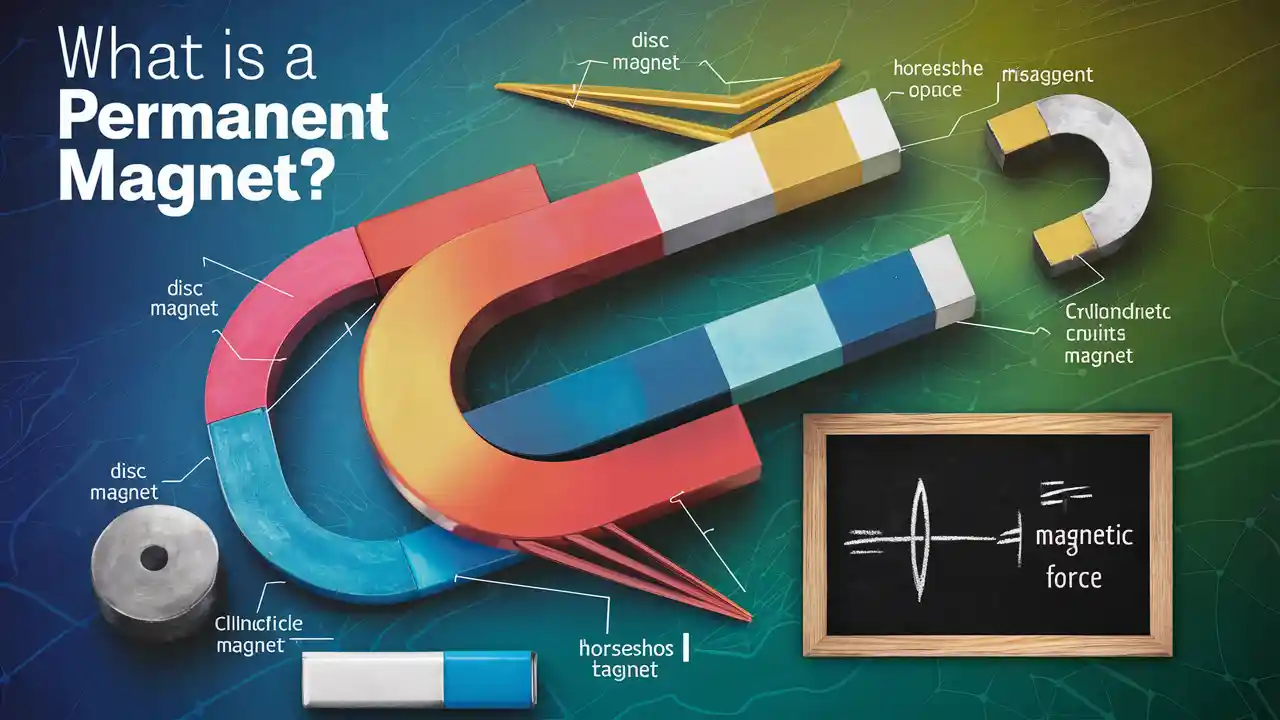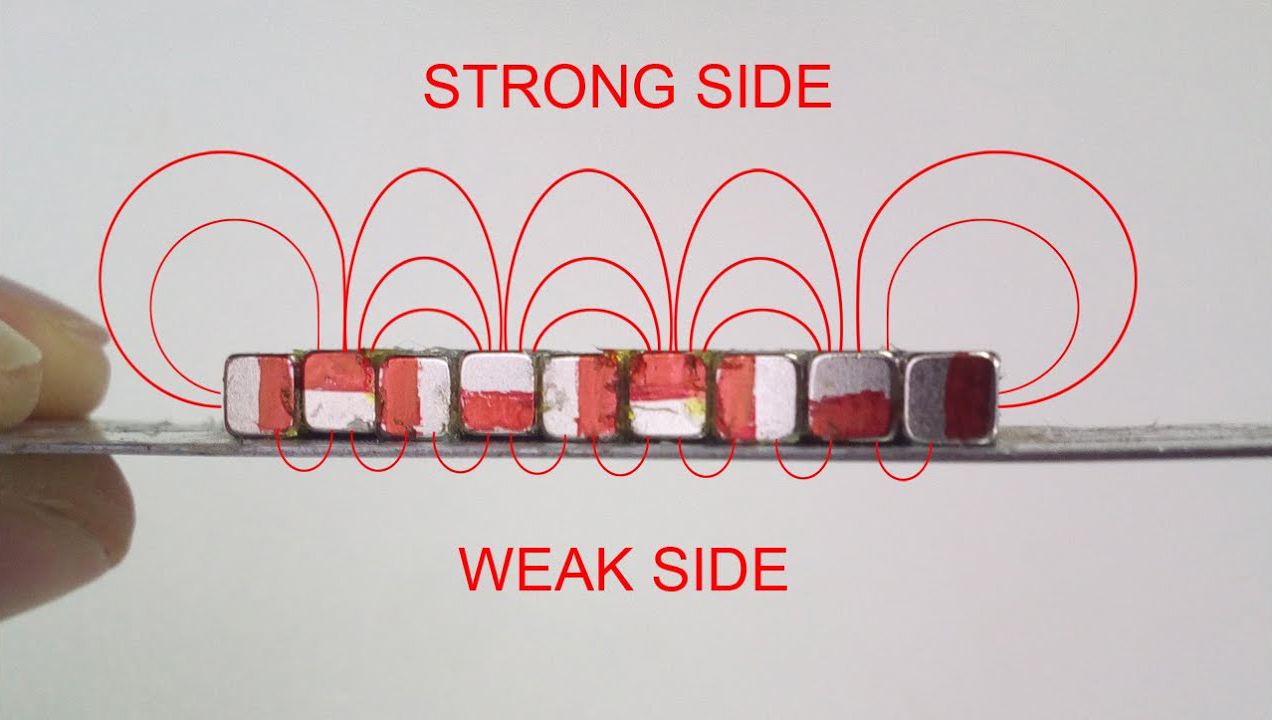Ever wondered what are permanent magnets made of and why some magnets are way stronger than others?
Here’s the deal:
Not all magnets are created equal. Some can barely hold a piece of paper to your fridge, while others are so powerful they can lift cars.
The secret? It’s all about the materials.
In this guide, as a professional neodymium magnets manufacturer, I’m going to break down everything you need to know about permanent magnet materials. You’ll discover the 5 main types, their compositions, and which ones work best for different applications.
Sound good? Let’s dive in.

What Are Permanent Magnets Made of?
Permanent magnets are made from special materials that can always be magnetized. They don’t need an external power source. These materials are called “hard” ferromagnetic materials.
The 5 Main Types of Permanent Magnet Materials
Before we get into the nitty-gritty, let me give you the big picture.
There are 5 primary materials used to make permanent magnets in 2025:
- Neodymium (NdFeB) – The strongest type available
- Samarium Cobalt (SmCo) – Great for high temperatures
- Alnico – Excellent heat resistance
- Ferrite (Ceramic) – Most cost-effective option
- Flexible magnets – Made with polymer binders
Each has its own strengths and weaknesses. And choosing the right one can make or break your project.
But here’s the thing:
Most people have no idea which magnet material to use for their specific needs.
That’s exactly what we’re going to fix today.
Neodymium Magnets: The Heavyweights
Let’s start with the strongest permanent magnets on the planet.
Neodymium magnets (also called NdFeB magnets) are composed of neodymium, iron, and boron. The typical composition breaks down like this:
- 25-35% Neodymium (Nd)
- 65-75% Iron (Fe)
- ~1% Boron (B)
Why Are They So Strong?
The secret sauce is in the crystal structure.
These elements form what’s called a tetragonal crystalline structure (Nd₂Fe₁₄B). The neodymium atoms provide magnetic anisotropy through their 4f electrons, while iron contributes the bulk magnetic moment.
Translation? They pack an incredible punch in a tiny package.
The Downside
But here’s the catch:
Neodymium magnets have some serious limitations:
- Temperature sensitive – Max working temp around 140°C (280°F)
- Corrosion prone – The iron content makes them rust easily
- Expensive – Rare earth elements don’t come cheap
That’s why most neodymium magnets need protective coatings like nickel-copper-nickel.
Real-World Applications
Where do you find these magnetic powerhouses?
- Electric vehicle motors
- Hard disk drives
- MRI machines
- High-performance speakers
- Wind turbine generators
Pro Tip: If you need maximum magnetic strength in the smallest space possible, neodymium is your best bet.
Samarium Cobalt: The High-Temperature Champion
Next up, we have samarium cobalt magnets (SmCo).
These rare earth magnets are made from an alloy of samarium and cobalt. There are actually two main types:
- 1:5 series (SmCo₅) – 36% samarium, 64% cobalt
- 2:17 series (Sm₂Co₁₇) – 25% samarium, plus cobalt, iron, copper, and zirconium
The Temperature Advantage
Here’s where SmCo magnets really shine:
They can operate reliably at temperatures up to 300°C (570°F).
That’s more than double what neodymium magnets can handle.
Why? The cobalt base provides a high Curie temperature (the point where magnetic properties disappear), while samarium creates strong magnetic anisotropy.
Where They’re Used
Because of their superior temperature performance, you’ll find SmCo magnets in:
- Aerospace systems
- Downhole drilling equipment
- Military applications
- High-temperature sensors
- Satellite components
The bottom line? If your application involves extreme heat, samarium cobalt is worth the extra cost.
Alnico Magnets: The Old-School Reliable Choice
Alnico magnets have been around since the 1920s, and they’re still going strong.
The name comes from their main ingredients:
- Aluminum (8-12%)
- Nickel (15-26%)
- Cobalt (5-24%)
- Iron (30-40%)
- Plus small amounts of copper and titanium
Unmatched Heat Tolerance
Here’s what makes Alnico special:
They can operate continuously at temperatures up to 540°C (1,000°F). Some grades maintain magnetic properties even above 800°C.
That’s hotter than molten lead.
The Manufacturing Process
Alnico magnets go through a unique heat treatment process:
- Heated above 1,200°C
- Cooled in a strong magnetic field
- Creates elongated, rod-like magnetic domains
- Domains get “locked” in place
This gives them their directional magnetic properties.
Common Applications
You’ll find Alnico magnets in:
- Electric guitar pickups
- Loudspeakers
- High-temperature sensors
- Traveling wave tubes
- Vintage audio equipment
Important note: Alnico has relatively low coercivity, meaning it can be easily demagnetized by external magnetic fields. Keep this in mind for your design.
Ferrite Magnets: The Budget-Friendly Workhorses
Let’s talk about the most common permanent magnets in the world.
Ferrite magnets (also called ceramic magnets) are made from iron oxide combined with barium or strontium carbonate.
The chemical formula is SrFe₁₂O₁₉ for strontium ferrite (the more popular choice).
Why They’re Everywhere
Three reasons ferrite magnets dominate the market:
- Dirt cheap – Lowest material cost of any permanent magnet
- Corrosion proof – No protective coating needed
- Decent performance – Good enough for most applications
Manufacturing Process
Making ferrite magnets is surprisingly simple:
- Mix iron oxide with strontium carbonate
- Press into desired shape
- Sinter at 1,250-1,350°C
- Result: Dark gray ceramic material
Where You’ll Find Them
Ferrite magnets are literally everywhere:
- Refrigerator door seals
- Loudspeakers (especially woofers)
- DC motors
- Magnetic separators
- Those basic fridge magnets on your kitchen
The magnetic strength isn’t impressive, but for basic applications, ferrite magnets get the job done at a fraction of the cost.
Flexible Magnets: The Shape-Shifters
Last but not least, we have flexible magnets.
These are made by mixing ferric oxide (Fe₂O₃) with a polymer binder. Think of it as magnetic material mixed with rubber or plastic.
Key Characteristics
- Flexible – Can be bent, twisted, and shaped
- Easy to work with – Cut with scissors, drill holes, etc.
- Lower strength – Weaker than rigid magnet types
- Versatile – Available as sheets, strips, or rolls
Typical Applications
You see flexible magnets used for:
- Refrigerator magnets
- Magnetic business cards
- Vehicle signage
- Craft projects
- Gaskets and seals
They’re not going to win any strength contests, but their flexibility makes them perfect for certain applications.
How Permanent Magnet Materials Are Chosen
So how do engineers decide which magnetic materials to use?
It comes down to 5 key factors:
1. Strength Requirements
- Need maximum power? Go with neodymium
- Moderate strength OK? Ferrite works fine
- Somewhere in between? Consider Alnico or SmCo
2. Operating Temperature
- Room temperature: Any material works
- Up to 140°C: Neodymium is fine
- Up to 300°C: Samarium cobalt
- Above 300°C: Alnico only
3. Corrosion Resistance
- Harsh environment: Ferrite or SmCo
- Indoor use: Coated neodymium OK
- Outdoor: Avoid uncoated iron-based magnets
4. Cost Sensitivity
- Budget tight: Ferrite all the way
- Performance critical: Rare earth worth it
- Middle ground: Alnico
5. Size Constraints
- Space limited: Neodymium packs most punch
- Size not important: Ferrite saves money
Pro Tip: Always consider the total system cost, not just material cost. A smaller neodymium magnet might cost more per pound but save money overall.
The Future of Permanent Magnet Materials
Here’s what’s happening in magnetic materials research as of 2025:
Rare Earth Alternatives
Scientists are working on reducing dependence on neodymium and dysprosium by:
- Using more abundant cerium instead
- Developing iron nitride compounds
- Creating hybrid designs mixing different materials
Recycling Initiatives
Several companies now recover rare earth elements from end-of-life products, helping address supply chain concerns.
Advanced Manufacturing
New techniques like 3D printing are enabling:
- Complex magnet geometries
- Localized magnetic properties
- Reduced waste in production
The bottom line? The permanent magnet industry continues to evolve, driven by demand from electric vehicles and renewable energy.
Making the Right Choice for Your Project
Let me break this down into simple decision rules:
Choose Neodymium if:
- You need maximum strength
- Size/weight matters
- Operating temperature under 140°C
- Budget allows for premium performance
Choose Samarium Cobalt if:
- High temperature operation required
- Corrosion resistance critical
- Strength more important than cost
- Reliability is paramount
Choose Alnico if:
- Extreme temperature stability needed
- Vintage/retro applications
- Can handle lower coercivity
- Heat resistance over 300°C required
Choose Ferrite if:
- Cost is the primary concern
- Moderate performance acceptable
- Corrosion resistance important
- Large quantities needed
Choose Flexible if:
- Need to conform to curved surfaces
- Easy processing required
- Lower strength acceptable
- Creative applications
Wrapping Up
Now you know what are permanent magnets made of and how to choose the right material for your needs.
The key takeaway? There’s no “best” permanent magnet material – only the best choice for your specific application.
Whether you need the raw power of neodymium, the temperature stability of samarium cobalt, the reliability of Alnico, the economy of ferrite, or the versatility of flexible magnets, understanding these magnetic materials helps you make smarter decisions.
Remember: the strongest magnet isn’t always the right magnet. Consider your temperature requirements, budget constraints, and environmental factors before making your choice.
What are permanent magnets made of? Now you have the complete answer.



